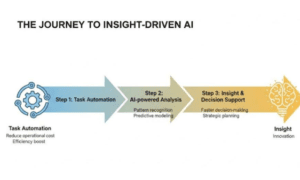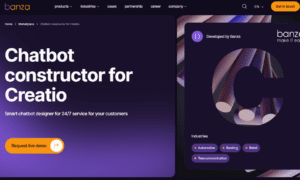The way we watch, listen, and even trust content online is shifting—and fast. It’s not just about algorithms or big data anymore. The new wave crashing into the digital world is something you’ve seen popping up everywhere, but probably haven’t sat with long enough to really get what’s going on. It’s AI—but not the version you’ve heard about in passing. We’re talking about AI in full video form. Talking faces. Emotion. Voiceovers that sound so real it’s hard to believe they’re not. And these aren’t just cool gadgets for fun social media posts. AI firms and AI companies are quietly turning this tech into something way more serious. They’re reshaping trading, communication, branding, and who even counts as a “real” person online.
We’re not talking science fiction. This is already in motion. It’s getting cheaper, smarter, and freakishly more convincing by the week. And in the high-stakes world of digital trading, where milliseconds matter and impressions carry price tags, these new AI tools are being used in ways that nobody really saw coming.
Let’s break down what’s really going on beneath the surface—and how AI videos, voiceovers, and digital avatars are already flipping the script for the world of trading, finance, and global communication.
Why AI Videos Are Flooding the Digital Space
Open your feed. Scroll for ten seconds. If you’re not seeing at least one AI-powered video, you’re in the minority. They’re everywhere. Sometimes it’s a clean-cut person explaining crypto in thirty seconds. Other times, it’s a smiling face reading stock analysis word-for-word in flawless English, even if the speaker’s actual language isn’t. That’s where it starts. But where it goes is something entirely different.
AI videos don’t just reduce production costs. They wipe them off the map. You no longer need a studio. You don’t need actors. You don’t need lighting, makeup, or even a camera. You need a script and a click. That’s it. AI companies are packaging this capability and turning it into something slicker than any ad agency ever dreamed.
And the scary part? Viewers can’t tell the difference. That means AI firms are producing polished explainers, tutorials, and market overviews at scale, pushing them into every channel they can reach. It’s not just that the content is cheap—it’s that it feels human, even when it isn’t. And when it comes to gaining trust quickly in financial spaces, that changes the game entirely.
How AI Voiceovers Are Redefining Global Communication
There’s a new way to speak to an international audience, and it’s not just dubbing or subtitles. AI voiceovers have taken a quantum leap. They don’t sound robotic. They don’t stumble through phrasing. They capture tone, rhythm, and even personality. And when paired with the right visuals, they can make it feel like someone’s talking to you, no matter what language you speak.
Here’s where it gets wild: the newest versions can take your content and make it sound native in over a dozen languages, all without hiring a single translator. This isn’t just about convenience. It’s about reach. A single 90-second AI video, reworked using an AI translator, can go global without hiring a team. For AI firms trying to reach investors, clients, and customers around the world, that kind of scale is everything.
There’s also this weird intimacy that comes with hearing something in your own voice or seeing a familiar face speak your native tongue, even if they never recorded it. That’s what the new AI translator tools are pulling off. And once you experience it, you realize—this isn’t just cool. It’s effective. It’s persuasive. And in the business of trading, persuasion equals profit.
Digital Avatars Are Replacing Real People, And Nobody’s Talking About It
They smile. They nod. They blink. They look like they’re thinking when they pause. But they’re not. They’re digital avatars—and they’re fooling more people every day.
This isn’t just some TikTok trend. It’s a full-blown movement inside AI companies, especially the ones looking to simplify customer service, run 24/7 trading platforms, or create educational content that doesn’t need a face behind it. What’s trippy is how believable they’ve become. These avatars can carry full conversations. They can respond to questions. They can “react.” And yes, there are platforms that will let you create a talking AI avatar for free. That means anyone—literally anyone—can build a character and start producing content that looks and sounds like a real person, even if that person never existed.
Now imagine that technology being used in the trading space. Explainer videos, earnings calls, forecast updates—entire presentations can be delivered by a digital human. No scheduling. No rehearsal. No jet lag or delays. And again, for global firms trying to scale fast without compromising quality, that changes everything.
But it raises real questions, too. If everyone starts using avatars, how do we know who’s real? And in a world where trust is currency, does authenticity even matter if the avatar performs better than the person it’s based on?
AI Trading Revolution: Why Real Traders Are Quietly Using Digital Humans
Behind the scenes, the trading world is already embracing AI video tools, whether they admit it or not. AI firms working in finance don’t just want faster processing. They want faster communication. They want tools that can deliver reports, explain volatile swings, and break down complex trades in under two minutes. Enter the AI video boom.
It started with text-to-speech. Then it moved to avatar presenters. And now, we’re seeing AI videos that can simulate entire teams. A single financial analyst can now look like a 10-person operation, using AI voiceovers, avatars, and stock video to generate multiple daily updates, forecasts, and briefings.
This isn’t about cheating the system—it’s about scaling up without burning out. In fact, some of the savviest traders are using digital avatars to build trust with clients who speak different languages or live in different time zones. By mixing in AI tools, they can personalize communication while still hitting deadlines and staying responsive. That’s the quiet AI trading revolution most outsiders don’t see yet—but it’s gaining speed fast.
And the craziest part? These tools aren’t expensive anymore. The cost to produce one polished AI video has dropped so low that even small players can now look like massive institutions. That means the line between big firms and solo hustlers is blurring in ways nobody expected.
The Ethical Line Nobody Wants to Talk About
As these tools get better, cheaper, and more accessible, there’s one big problem nobody really wants to touch. What happens when we can’t tell what’s real anymore?
It’s easy to say, “Well, people will know the difference.” But they don’t. We’re already watching AI-powered videos, reading AI-written analysis, and listening to AI voiceovers without realizing it. AI companies know this. They’re not trying to deceive anyone—but the tech is doing the trick all on its own.
Digital avatars are only going to get more lifelike. We’re talking micro-expressions, subtle vocal fatigue, fake eye contact that feels shockingly personal. Once that layer gets peeled away, what’s left? If AI videos can sell a trading strategy better than the person who invented it, who gets credit? Who gets blamed when it fails?
And what happens when investors start building emotional connections with avatars—because yes, that’s already starting to happen. People trust the face they see every day, even if they secretly know it’s not real. That trust becomes currency. That currency gets traded. And once that becomes normal, the whole economy of belief online starts shifting in ways we haven’t even begun to process.
The Bottom Line
This isn’t the beginning of AI in the trading world. That ship sailed. We’re already deep in it. What’s happening now is the personalization of AI—voiceovers, avatars, and emotionally intelligent videos—being turned into tools of influence, persuasion, and scale. AI firms are no longer just crunching numbers behind the curtain. They’re standing on stage, smiling, blinking, and talking directly to us.
And whether that excites you, scares you, or both—it’s worth paying attention to. Because very soon, the most convincing voice in the room might not belong to a person at all



































